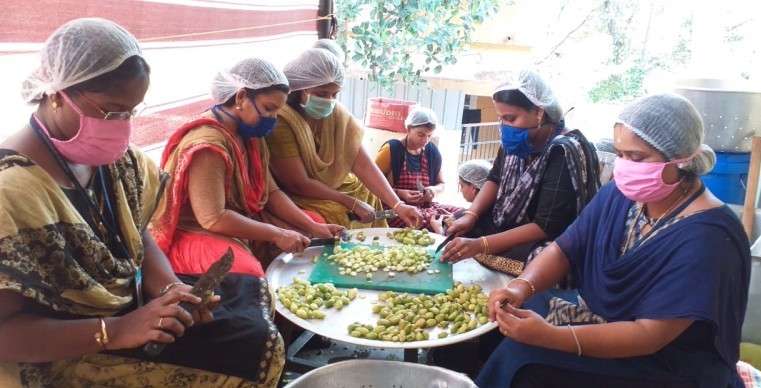This list of guidelines and practices that organisations are taking in response to COVID-19 has been crowdsourced. It is a developing document — if you would like to add to it, please send us an email on writetous@idronline.org.
This article was last updated on 18th March 2020.
1. What donors and foundations can do
This is a good time for donors and foundations to reach out to their grantee organisations. Below are some steps that are being followed:
- Reassure: Tell your grantee partners that you understand the stress COVID-19 has placed/might place on their programmes and that they are not alone in dealing with it. This will go a long way in reassuring them.
- Re-align deliverables: Allow your grantee organisations to share delays, changes, and risks they foresee, so that you can plan how best to address them together.
- Communicate with your board: Talk to members of your board and sensitise them about the effects of the pandemic on grantee partners and programmes, so that everyone is on the same page.
- Communicate with your funding partners: Talk to your funding partners about the likelihood of any changes to programme scope and deliverables.
2. Working in the field
- Home visits in the community: Some organisations are avoiding home visits, and are instead using phone calls for information sharing, awareness building, counselling, etc.
- Group activities: While organisations vary in how they are defining a large group, some say they are looking at it as 10 people or more, and avoiding activities accordingly.
- Interactions between team members from within and outside the community are being minimised.
- When handling cash (for instance, during SHG meetings), a good practice to follow is to put the cash in a ziplock bag and immediately use hand sanitiser or soap to wash hands.
- Items that are handled by multiple people should either be disinfected or multiple instances of handling need to be limited.
- Data collection practices: Draw on these guidelines from IDinsight.
3. Working in the office
- Minimise points of infection: Organisations have asked team members to leave shoes by the door when they walk in, have provided adequate amounts of sanitiser, and have put measures in place to ensure that surfaces that are touched frequently (door knobs, switches, remote controls, tables, etc) are disinfected regularly. Organisations that use biometric attendance systems have replaced these with a manual attendance register, ensuring that only one person handles the register.
- Follow good personal hygiene: Wash your hands frequently. If soap and water are not readily available, use an alcohol-based hand sanitiser that contains at least 70 percent alcohol. If you cough or sneeze, cover your mouth and nose with a tissue, throw the tissue in a bin and wash hands with soap and water. Use your elbow instead of your finger to navigate commonly-touched items like switches and door handles, wherever possible. If you have to use your hands, follow it up with a handwash/sanitiser.
- Staggered timings: For people coming into work by public transport, some organisations have allowed flexible timings/have staggered their timings for team members so that they don’t travel during rush hour.
- Meetings: Organisations have made it so that team members have the choice to advocate for any essential meetings to happen in a safer way (for instance, a virtual meeting or phone call). They have granted people the first right of rejection to be physically present in an external meeting, and those that do go for meetings are asked to exercise caution. One way in which this is being done is by avoiding meeting locations that are not on office premises. Organisations are also asking their teams to avoid inviting visitors to their offices.
- Avoid public transport and spaces: Use personal transport or cabs/autos for any travel within cities. Avoid public spaces, crowded areas, and any large group meetings/conferences.
4. Working from home (WFH)
- Prior to mandating a WFH: Conduct a survey to check if all team members have a safe and suitable place to work from remotely, and stress test your organisation’s servers to check if they can support everyone logging in remotely.
- Equip teams to WFH: This could include providing an allowance for mobile data or updated IT equipment, guidelines for how remote communication will work, or tips to help everyone stay productive.
- Set up a weekly routine: For example, at IDR, we have two fixed days on which people have to update the team on specific projects, along with a fixed frequency with which people check-in with their direct managers (either on the phone, over email, or text).
- Over-communicate: At IDR we have asked team members to over-communicate rather than assume something is known. For example, if somebody is working on a project/presentation and therefore will not be responsive on Slack or WhatsApp, we have asked that they give the rest of the team a heads-up.
- Call people more than you usually would: This helps with both, human interaction and efficiency.
- Budget time for video calls: Expect it to take approximately 25 percent longer over video call than in person, so budget more time per meeting.
- Maintain timings: Even if you want some flexibility in your work hours, having a set of ‘work-timings’ makes it so that the work day does not merge into all of your time at home.
- Staggered work from home: Some companies allow some proportion of their teams to come into work, so two to three people can come in if they find that more productive. Others have divided their office into teams that work from home and those that come in – so at any given time, the number of people in the office is limited. Still others have made it so that people can come in on two stipulated days of the week, the days vary across employees, so that any point all of them would have come in twice a week.
5. Overall
- Managing the response: Larger organisations are setting up dedicated taskforces to track the situation as it evolves and respond accordingly.
- Speak to your team members to understand who will need additional support: For example, people with prior medical conditions and those that are elderly may need to self-isolate, additionally those with children might require shifts in their schedules because their children’s schools and day care facilities are closed.
- Managing events and gatherings: Postpone large gatherings or do them differently (online/through webinars). Some organisations are choosing to continue with smaller meetings (for instance, SHG meetings with up to 5 or 10 people) as they consider them to be essential.
- Be vigilant about minor symptoms: If any symptoms emerge, ask team members to home quarantine and follow steps as guided by the WHO and Health Ministry, GoI. Provide team members with relevant information about hospitals/testing centers in your city/state and any other resources they may need.
6. What organisations and people want
- Support in staggering/postponing their work by two-three weeks
- Given the fact that the financial year ends on 31st March, allow nonprofits to a) settle their accounts by the end of April instead of March and b) carry over the unspent amount beyond 31st March
- Financial support for community members who work on an incentive basis so that physical distancing does not harm the most disadvantaged
- Financial support for vulnerable team members to take paid leave and work from home where possible
- Postponing of various statutory filing dates by a month
—
We’d like to thank Arun Kumar (Apnalaya), Kavita Mehta (Caymus Technology Ventures), Madhukar Banuri (Leadership For Equity), Mary Ellen Matsui and Reeva Kulkarni (Atma), Naghma Mulla (EdelGive Foundation), Shama Karkal (Swasti), Shrikant Ayyangar and Elizabeth Kurian (Mission for Vision), and others for their inputs.
Know more
- This advisory (on protecting yourself, your colleagues, making meetings work etc) put together by Swasti
- Lore’s resource center for information about the virus and how to effectively work from home
- This Google Doc of crowd-sourced tips for managing companies, compiled by Kavita Mehta, Founder & CEO Caymus Technology Ventures, home of Lore.online
- This globally crowdsourced list of resources for nonprofits that includes public health advice, guidelines to manage work from home, philanthropy’s response to the pandemic, and much more.




